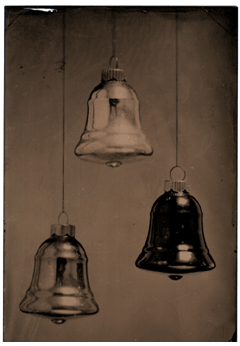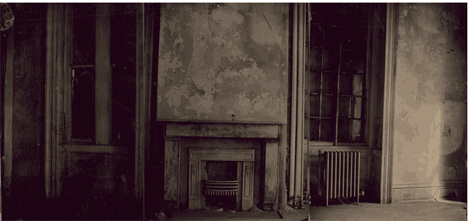The hubby hung out with me yesterday at the Gifted show, so I actually got a chance to walk around and see what the other vendors had to offer. Now, there I was thinking I was hot sh*t because I had black and white fiber prints displayed, but then I noticed some guy selling “modern tintypes”.
That guy was David Sokosh. He’s a regular at the Brooklyn Flea, but I never noticed the tintypes before. In fact, all I ever noticed was the cool handlebar mustache he sports. So, it’s very fitting that he works in a medium that went out of style with the handlebar mustache. *Editor’s note: They are both so out that they are totally IN!
I’ve made it quite clear how I feel about hanging digital photos on my wall (when I have walls). So when I saw a modern tintype, I just had to ask “Really? You actually do this? And you don’t cheat?” Personally, I wouldn’t have the patience for it, but I can appreciate all the work involved! There is no film and no paper. And definitely no digital! It’s a wet plate process that has to be poured by hand. You can read about the entire process here.
The linked art gallery no longer exists, but David is very much still in business doing tintypes and other early 20th century processes. The two matted and framed prints I saw at Gifted were $80 and $100. I was tempted to buy one for myself but instead asked if he does portraits. He would do a location sitting with 1 tintype for $250. Each additional tintype would be another $250. Trust me, that’s a good price!
David Sokosh also sells and repairs some gorgeous antique clocks that he had displayed at Gifted.



6 Comments
I’ll tell my brother-in-law about this. I’m sure he’ll swoon and make all kinds of jealous noises…
Hey…someone asked about ideas of crafty things to do with old puzzles that may be missing pieces. I thought they could make for an awesome mosaic/installation piece. Got any thoughts? This screamed “Phyllis” to me.
Thank you for being the only one who ever comments on my God forsaken blog.
Well, my first thought is resin. Or even polyurethane. The individual pieces can be used as jewelry or decorations on small boxes, etc.
If you want to keep the whole puzzle together, yeah….mosaic is a great idea! Maybe if you put it together all lopsided without snapping the pieces together you wouldn’t even notice there are pieces missing.
If you want to snap it together and fill in the missing areas, perhaps some kind of epoxy filler would work? I’m thinking a grout look, but you would have to really coat the pieces before grouting as they are only cardboard. Or!!!! What if you had light coming from behind the missing pieces?
Ok, that’s enough. Back to work.
Don’t worry–our fiber-based silver-gelatin prints are well on their way towards being considered an alternate process too.
And soon we’ll have to start explaining what film was. 😉
IS, not was–otherwise I’ll have to learn how to draw 🙂